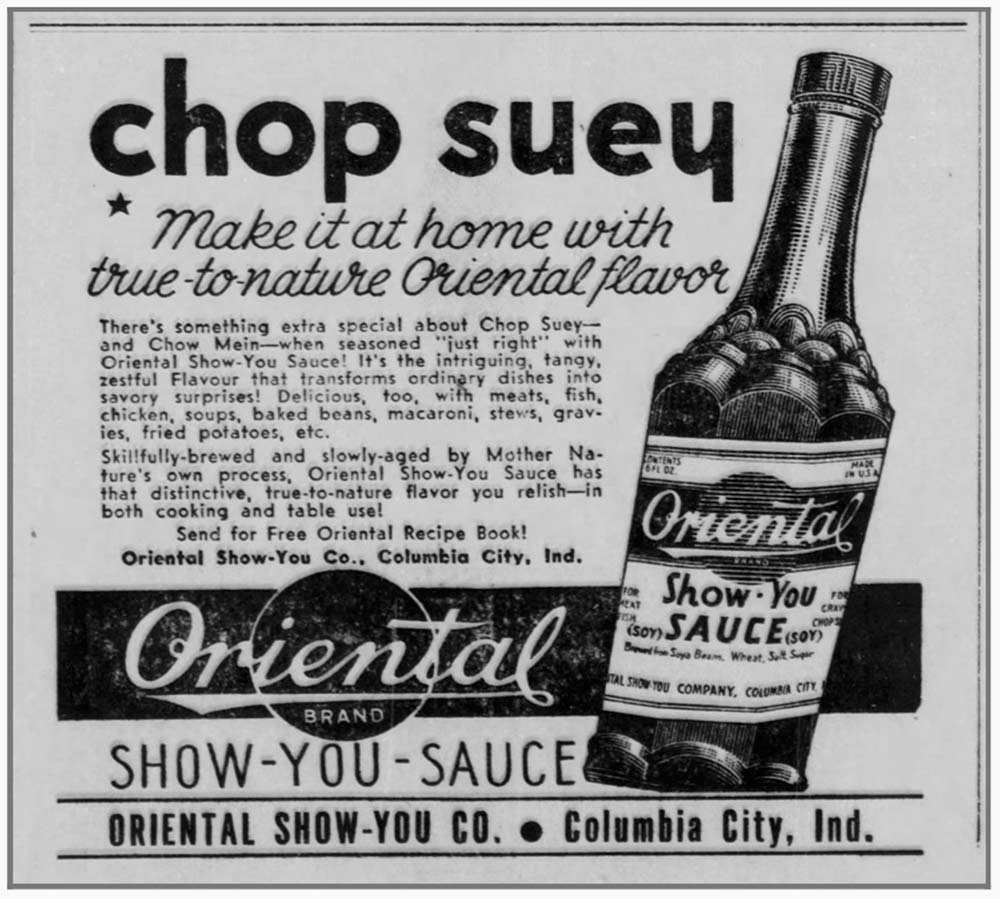Showstopping Soy Sauce
In many restaurants and family fridges, the soy sauce La Choy resides. Sprinkle it onto meats and rice and watch it seep into each meal. But while eating the salty-sauced grilled chicken or zucchini, have you ever wondered how the condiment was created? Not only did its inventor come to the United States, but it originated in the quaint town of Columbia City, Indiana. Thanks to Shinzo Ohki, the Midwest holds one of the country’s few soy sauce manufacturers, a piece of history that is now embodied in bottles of La Choy across the nation.
Shinzo Ohki was born south of Tokyo in Kamakura, Kanagawa prefecture, Japan in the early 1880s. Records from the U.S. show that he graduated from Columbia City High School in 1907. After traveling to give lectures, Ohki moved to Detroit then Chicago at around 23 years old. He then devoted his time to importing Japanese goods. Along with this, he began the businesses Taka Tea Co. and the Oriental Show-You Company. The latter represented a play on the Japanese word “shoyu,” soy sauce, and proved to be more successful over time.
Before the company gained recognition, Shinzo Ohki went back to Japan to educate himself on the making of fermented soy and mung bean sauce. He also met his wife, Taka Iwanaga, during that time. The couple returned to the United States in 1917 and birthed their only child, Grace, 4 years later. With a wife and daughter by his side, Ohki made a comeback in Columbia City sometime later, raising his family and his business, the Oriental Show-You Company.
The settlement in a small-town Indiana lifestyle had its perks, including the promotions other businesses provided. The first evidence of an advertisement for Ohki’s company appeared in a December 1917 edition of the Muncie Evening Press under the portion dedicated to Moran’s Quality Delicatessen Saturday Specials. Ohki put his business in a reputable position, adding it to grocery store advertisements from places such as Kroger. He even made it more appealing to his customers – who wouldn’t want a free cookbook after purchasing from him? Not only this, but he challenged himself and expanded his products to canned vegetables and chow mein. The company’s early stages were described as “magic” from local newspapers during the 1920s, adding a bit of pizazz to every meal. In the next couple decades, his business soon became a large-scale production facility, selling up to 12,000 gallons of Show-You sauce per year.
However, the magic faltered, for Japanese foreigners in America were not permitted to become naturalized citizens of the nation. With the requirement to draft into World War II, Shinzo Ohki was in an unstable spot, but the people of Columbia City came to the rescue. Beside being excused from self-reporting, Ohki was vouched for. Local residents created a letter writing campaign, highlighting the man’s positive impact on their community. It was not until his early 70s that Shinzo Ohki became a naturalized U.S. citizen.
Regarding the other members of the Ohki family, the daughter, Grace, attended college in Ohio. After starting a family of her own, they moved to California, leaving behind the Midwest and her father’s business. Back in Indiana, her parents continued to play significant parts in their community, participating in their local Presbyterian Church and cooking demonstrations for local residents. Aside from this, Shinzo Ohki also became heavily interested in Japanese Samurai swords. In 1963, his wife, Taka, passed away. Shinzo Ohki followed in 1967, leaving the Oriental Show-You Company in the hands of others. Continuing its legacy, the company was sold to Beatrice Foods in the same year. The buying resumed, the company being overtaken by ConAgra, which owns La Choy. Ohki’s roots grew even more, a scholarship established in his name and awarded each year at Columbia City High School.
Soy sauce may not be the first thing someone thinks of when Indiana comes up, but this staple holds much significance. Because of Shinzo Ohki and the people of Columbia City, one of the biggest manufacturers of soy sauce in the United States exists today. So, the next time you pour La Choy over the fried rice you saved, remember the name Shinzo Ohki.




